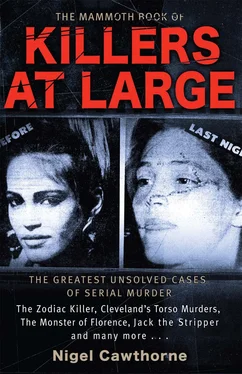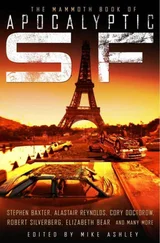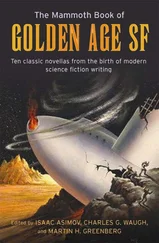Mayor Jackson now appealed to the FBI on the grounds that Latonya Wilson and Earl Terrill—then both still missing—may have been kidnapped and transported over a state line, making the crime a Federal offence.
On 20 August, the body of 12-year-old Clifford Jones, who was visiting his aunt in Atlanta, was found in a dumpster. He had been strangled with a ligature and was wearing shorts and underwear that did not belong to him. Three boys said that they had seen a black boy disappear into the back room of a Laundromat with the manager, a white male who was later jailed in 1981 for attempted rape and sodomy. One of the boys said he seen the manager “strangle and beat” the boy. The time they had seen the manager and boy together coincided with the time of death established by medical experts. Another witness said that he had seen the manager, whom he knew, drop a large object wrapped in plastic in the dumpster the night before Clifford’s body was discovered. The manager admitted that he knew Clifford and failed two polygraph tests. However, he was not charged on the grounds that the boy who had said he had seen Clifford strangled was “retarded” and Jones’ name was added to the growing list of the victims of the unidentified serial killer.
Eleven-year-old Darren Glass was also added to that list after he vanished near his home on 14 September 1980. Shortly afterwards his foster mother received an emergency call from someone the operator said claimed to be Darren. But when she was put through the line was dead. The police initially dismissed the case as Darren had run away several times before. But when he failed to turn up he joined the list, primarily because authorities did not know what else to do with his case. He was never found. On 9 October, Charles Stephens went missing. His body was found the following day. He had been asphyxiated.
That year, the citizens of Atlanta were particularly afraid that the killer would strike again at Halloween when children were out trick-or-treating. Police patrols were stepped up, to no avail. On 2 November, the body of nine-year-old Aaron Jackson, a friend of earlier victim Aaron Wyche, was found under a bridge over the South River, near where Wyche’s body had been found. Like Charles Stephens he had been a victim of smothering.
Fifteen-year-old Patrick Rogers disappeared on 10 November. Like Darren Glass, he was thought to have run away several times before and it took some time before he was added to the list. His body was found face down in the Chattahoochee River on 21 December. His head had been crushed by heavy blows. “Pat Man” Rogers had known Aaron Jackson and had a crush on his sister. In fact, Rogers had connections to 17 other murder victims, some of which had not made the list. A week before he went missing, he had told his mother that he felt that the killer was closing in. A mother’s friend told the police that Rogers had been looking for her son to tell him that he had found someone to manage their singing career. His name, she said, was Wayne Williams. It was the first time that Williams’ name had come up in connection with the case.
On 2 January 1981 Lubie Geter, aged 14, disappeared. His body was found in a wood by a man walking his dog on 5 February. He was dressed only in his underwear and his decomposed corpse showed signs that he had been strangled manually. He was also connected to the paedophile John David Wilcoxen, who had been dismissed as a suspect in the Earl Terrill case, and another unnamed child molester—a white man whose apartment he had been seen in several times.
Lubie Geter’s friend, 15-year-old Terry Pue, disappeared on 22 January after being seen in a hamburger joint on Memorial Drive. An anonymous caller—thought to be white—told the police where they could find his body. Pue’s body was recovered the next day. He had been strangled with a rope or piece of cord. This time, the investigators used a new technique which allowed them to lift fingerprints from the boy’s corpse. But the fingerprints they found did not match anyone on file. The caller had also indicated that the body of another victim might be found in the same place. Years later, other human remains were found nearby. These were thought to be those of Darren Glass.
On 6 February, 12-year-old Patrick Baltazar vanished shortly after calling the police and telling them that he thought the killer was coming after him. The Atlanta police task force did not respond. After he went missing, one of his teachers received a phonecall from a boy who said nothing, just cried. She said she thought it was Patrick. His body was found the following week by a man clearing up an office park. It showed signs of strangulation inflicted by rope. His corpse led FBI agents to the decomposed remains of Jeffrey Mathis that were found nearby. By this time, Atlanta’s murder spree had become known across America and Jeffery Mathis’s funeral made the national news.
Curtis Walker, aged 13, snuck off on the afternoon of 19 February to earn money by carrying elderly folks’ bags at a local K-mart and never came home. He was strangled and his body was found later that day in Atlanta’s South River. His uncle, Stanley Murray, who lived with Curtis and his mother Catherine Leach on the Bown Homes housing project in Atlanta, was also murdered, though his slaying did not make the list.
On 2 March, 16-year-old Joseph “Jo-Jo” Bell went missing. Two days later, a fellow employee of Cap’n Peg’s seafood restaurant told the manager that Jo-Jo had called him and told him that he was “almost dead”. After that, Jo-Jo’s mother received a call from a woman who said she had Jo-Jo. She called back and spoke with Mrs Bell’s other two children. Mrs Bell called the murder task force that had been set up by the Atlanta police. When they did not respond, she called the FBI. By then it was too late. On 19 April, Jo-Jo’s body was found in the South River. Like many of the other victims, he had been asphyxiated.
Joseph Bell could be connected to a number of other victims. He had been to summer camp with Cynthia Montgomery, a murdered girl whose name did not make the list. However she had her own connections with a number of people on it. Jo-Jo’s mother had been in prison for the murder of her husband. While incarcerated, she had befriended another inmate, who was the sister of Alfred Evans.
Jo-Jo was also a friend of 13-year-old Timothy Hill, who disappeared ten days later. Together they often visited the house of 63-year-old homosexual Thomas Terrell on Gray Street, which was known as Uncle Tom’s. Terrell’s next-door neighbour had seen Timothy Hill the day before he disappeared. Hill was a troubled youth with violent tendencies. A friend told the police that Terrell paid the under-age Hill for his sexual favours. Terrell admitted having sex with Hill. The last witness to see Hill alive said that Timothy had spent the night before he vanished at Terrell’s house after missing his bus home. He also said he saw Timothy from his window, talking to a teenage girl. Timothy Hill also had connections with Alfred Evans, Anthony Carter, Jeffrey Mathis and Patrick Baltazar.
On 30 March 1981, Timothy’s body was found in the Chattahoochee River. The cause of death was recorded as drowning, though it seems likely he was asphyxiated. Strangely, Terrell was never a suspect in the murders of Jo-Jo Bell or Timothy Hill.
By April 1981, the Atlanta “child murders” had become an embarrassment for the authorities. People took things into their own hands. Prayer vigils were held. Children were given safety instructions. Neighbourhood searches were made for missing children and curfews organized. Even the noted psychic Dorothy Allison was called in. Then FBI spokesmen announced that a number of the murders had been “substantially solved”—the victims had been killed by their own parents. This outraged Atlanta’s African-American community. The civil rights struggles of the 1960s and 1970s were still fresh in their minds and the white supremacist group Ku Klux Klan was still active in the South.
Читать дальше











